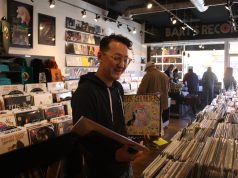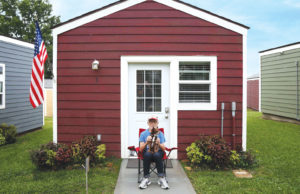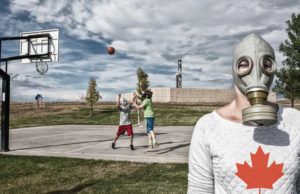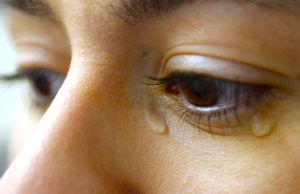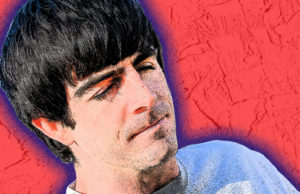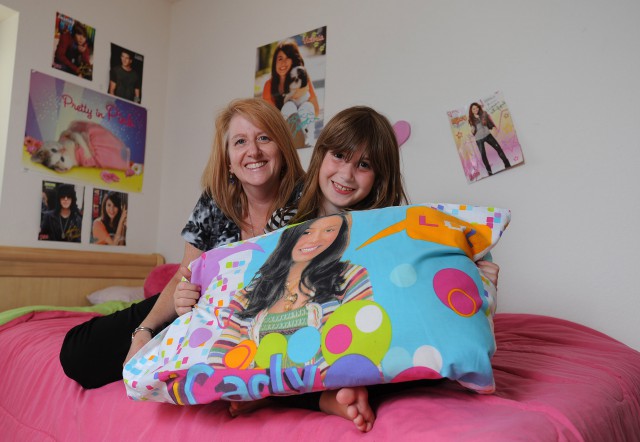
8-year-old daughter, Sara. It’s a process that usually plunges poor Mom
into a black hole of boredom.
But then one day, the
Now, Moss is a loyal devotee of the show starring
party or otherwise engaged, she’ll occasionally check out “iCarly” on
her own. And, yes, she’s not ashamed to admit that her iPod contains a
few episodes.
“It’s funny and smart, and safe without being cheesy,” Moss says. “I really enjoy it. Does that make me pathetic?”
Not if you put stock in the numbers. According to
Nielsen, “iCarly” is one of several current TV shows aimed at tweens
(kids 8-13), but also watched by people who don’t wear braces or use
Clearasil. An “iCarly” special earlier this year (“iSaved Your Life”)
drew a remarkable audience of 12.4 million, 2.7 million of whom were
adults ages 18-49.
This kind of “iCarly” love among grown-ups is not a news flash to creator and executive producer
He says he routinely hears from “older teens, college kids, parents and
grandparents” who enjoy the show and are “incredulous” that they do. He
insists they shouldn’t be.
“I’ve said from the start that I’m not going to
write kiddie sitcoms. I write what I like and just adapt (to the
genre),” Schneider says. “So it’s interesting to me when adults watch
our show and suddenly find themselves saying, ‘This doesn’t suck.'”
“iCarly” isn’t the only tween show making an
impression on adult viewers and filling a TV void of family
programming. “Good Luck Charlie,” a new Disney Channel sitcom about a
family adjusting to the unexpected arrival of its fourth child,
attracted more than 930,000 adults to its premiere episode in April.
Other tween shows that perform reasonably well among
adults include the animated “Phineas and Ferb,” “Hannah Montana” and
“Wizards of
Even Cartoon Network is getting in on the act. For
the recent premiere of “Unnatural History,” more than one-fourth of the
kids who tuned in watched the show with an adult — a significantly
higher figure than usual for the cable outlet.
“It’s kind of a new and refreshing trend,” says
youth marketing firm. “It’s a move back to the all-family type
programming that the (broadcast) networks, for some reason, abandoned.
These kinds of shows come with themes that are relatable and relevant
to more than just the kids.”
Indeed, the executives at the Disney Channel bat
around the term “family inclusive” in reference to their shows, and
speak of “entry points” that encourage both kids and their parents to
watch. With
“But it goes beyond simply putting strong adult characters in the shows,” says
senior vice president of original programming for the Disney Channel.
“We want parents to see themselves in those characters — or even to see
what they were like as a teen and appreciate what the younger
characters are going through.”
Bonnett points out that “Good Luck Charlie” often
has the grown-ups talking about trying to find more time to spend with
the kids — a desire that resonates with many parents. And a recent plot
revolved around Mom yearning to be seen as “cool” by her daughter.
“That’s not a story line you would have necessarily
seen years ago,” Bonnett says. “It’s not that the mom didn’t want be
taken seriously, or be seen as an authority figure. It’s that she felt
it was important to bond with her daughter.”
A lot of parent-child bonding apparently is happening with “Phineas and Ferb,”
cartoon about suburban stepbrothers who spend their summer vacation
devising outrageous inventions to stave off boredom. Adults 18 and
older comprise 24 percent of the show’s audience when it airs on the
Disney Channel and 31 percent on Disney XD.
“I like how it celebrates imagination via the new
and creative enterprises the characters undertake. Plus, it’s pure
escapist fun,” says
Blum, who watches “Phineas and Ferb” with his son
and daughter, ages 9 and 7, has written extensively about his love for
the quirky show. He praises its snappy writing and the way it doesn’t
“talk down” to children.” And he appreciates how it contains a few
jokes aimed directly at baby boomers.
“On one episode, Phineas did a
Still, the youth networks seemingly walk a fine line
in producing programs that appeal to adults. After all, don’t kids
typically avoid things that their parents see as hip? Not always,
claims
“We’ve done studies that show, as the world changes,
kids want to share more of their personal interests with their
parents,” she says. “That doesn’t mean they still don’t have their
secret lives on Facebook, but they’re basically saying, ‘(These shows)
are mine, and I want to share them with you.’ It’s very much like the
way parents share their classic rock songs with the kids.”
And it certainly makes smart business sense,
according to Ewing. Tweens are responsible for hundreds of billions in
consumer spending. If television can woo Mom and Dad into the fold, it
only stands to reason the networks will have allies whenever their
children make urgent pleas for that “iCarly” doll or
“Obviously it’s a big plus if you can build a
business that is endorsed and supported by parents — one that isn’t
looked upon in a negative light,” Ewing says.
For Moss, “iCarly” has fulfilled that mission. A web
designer, she appreciates the fact that Cosgrove’s character is
tech-savvy. But what she really embraces are the “positive messages”
the series imparts to her daughter.
“It shows that girls can be funny and smart and
leaders, too,” she says. “It’s not just about shopping and boys and the
way you look. Carly is no bimbo.”
———
(c) 2010, Contra Costa Times (Walnut Creek, Calif.).
Visit the Contra Costa Times on the Web at http://www.contracostatimes.com.
Distributed by McClatchy-Tribune Information Services.


